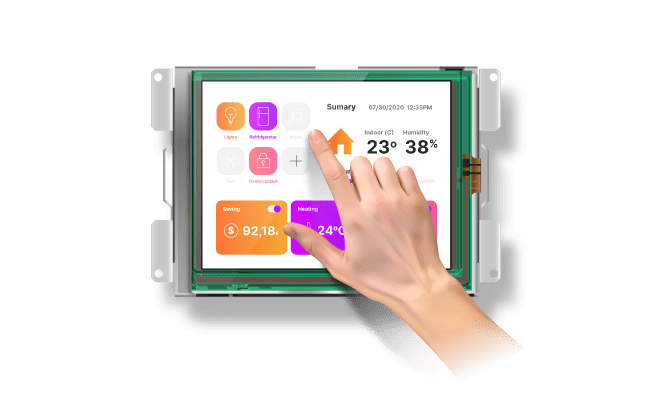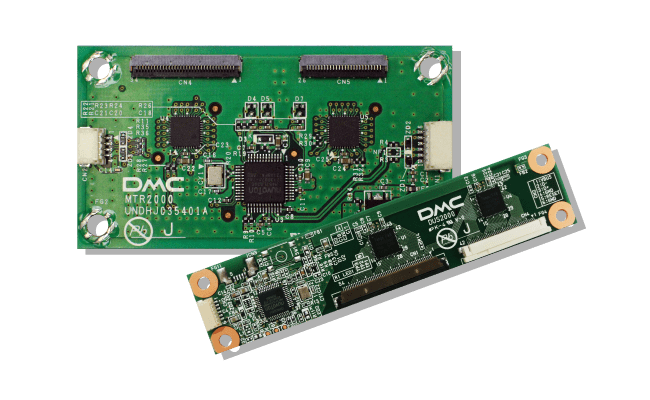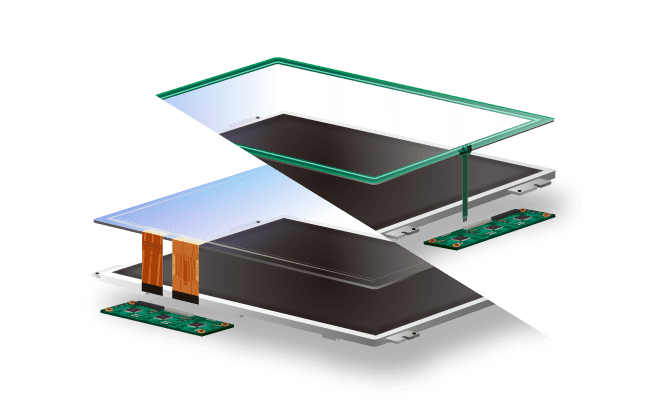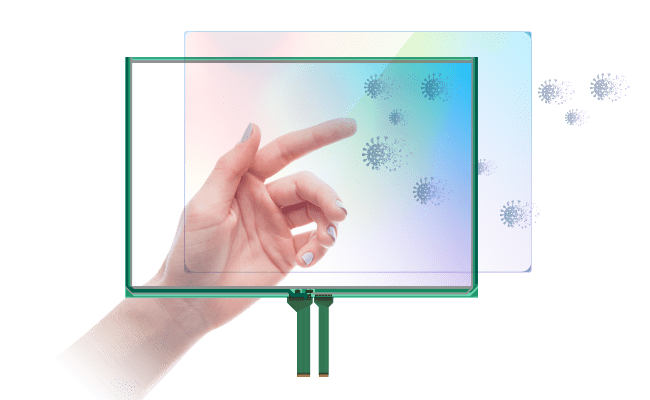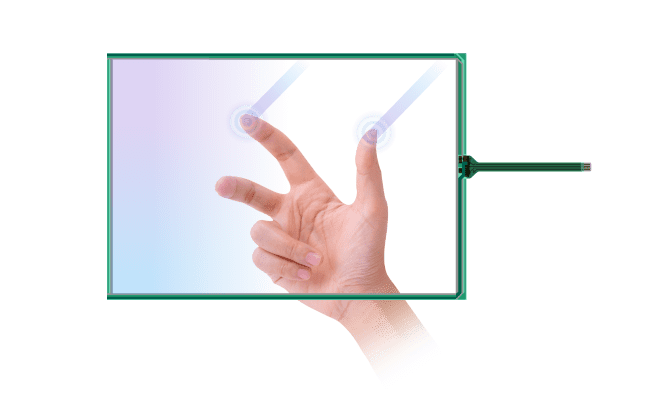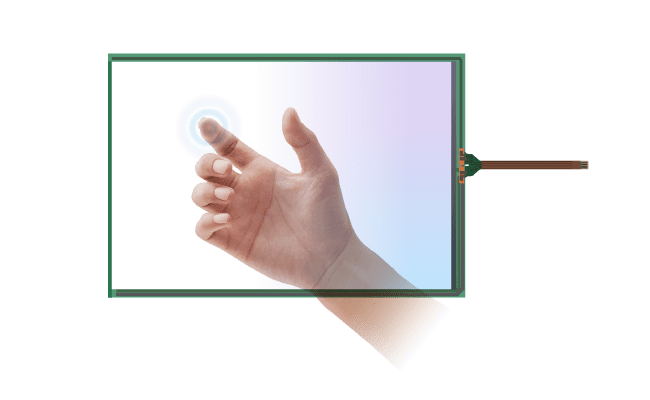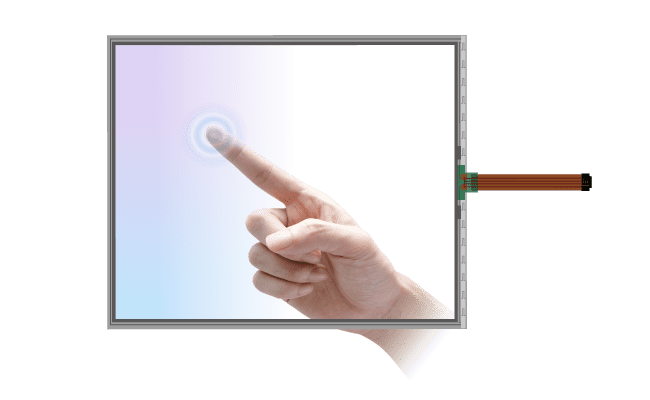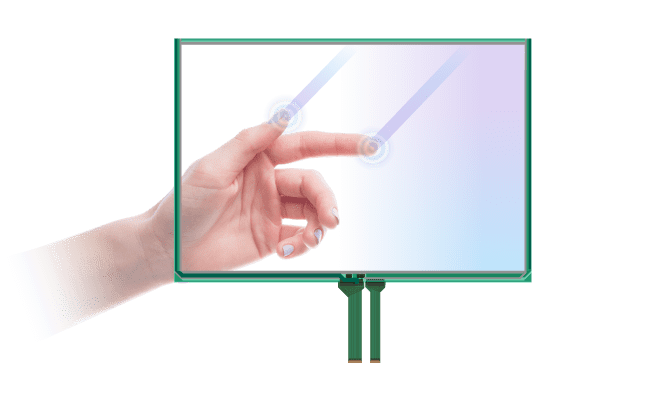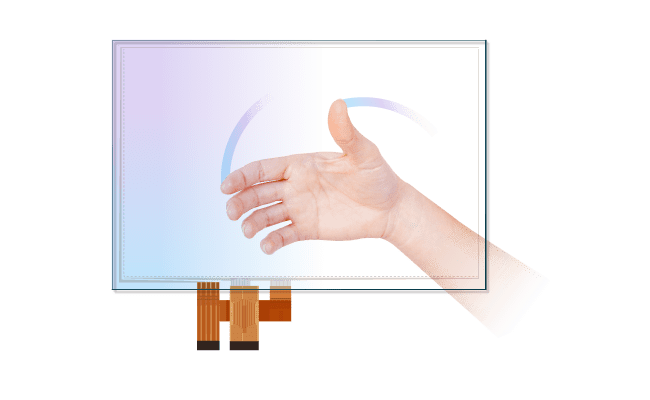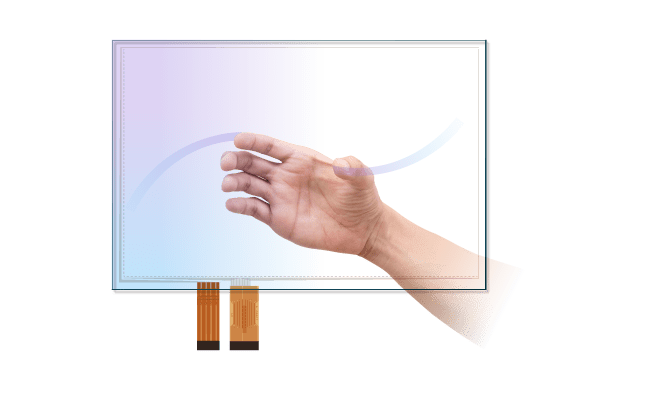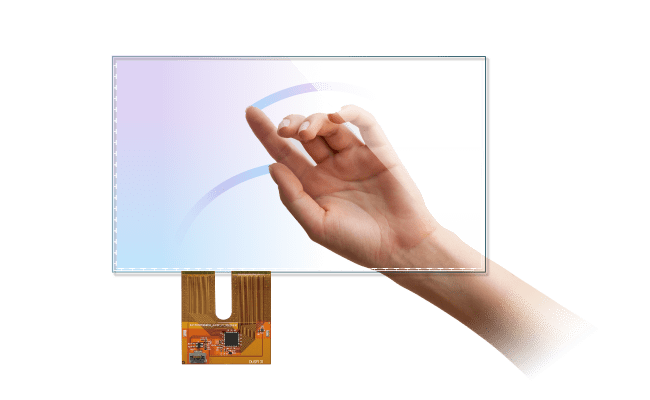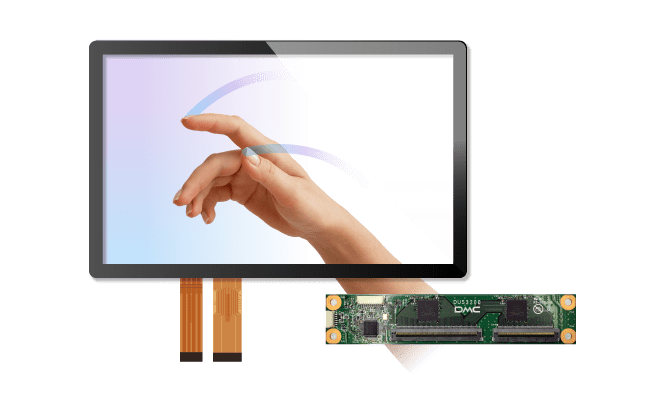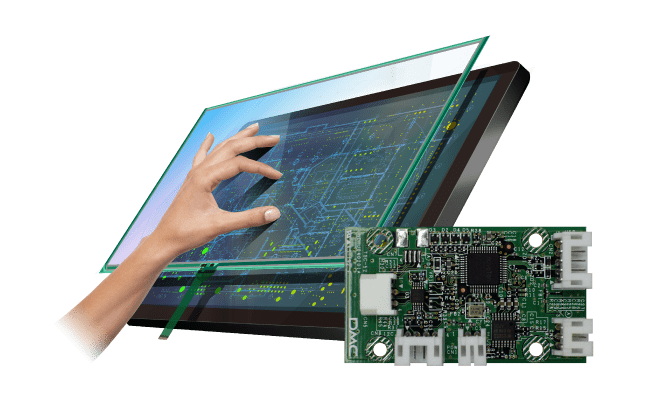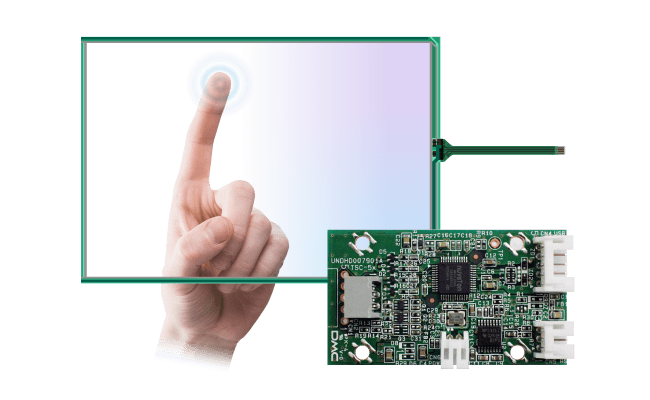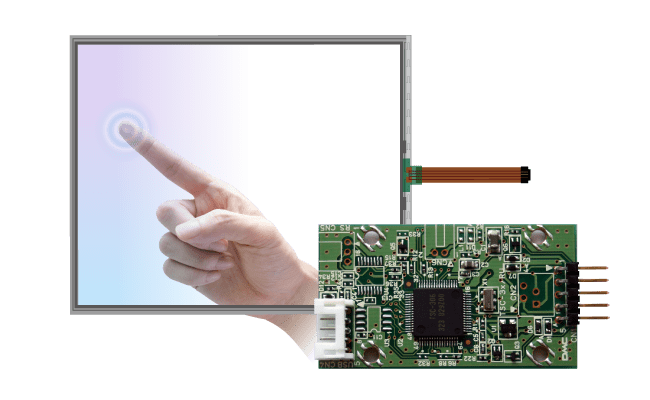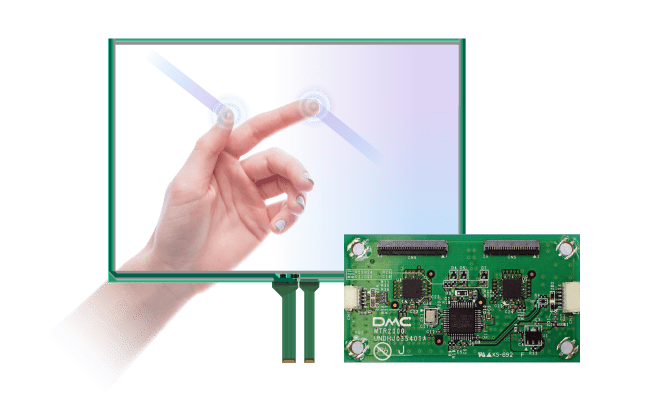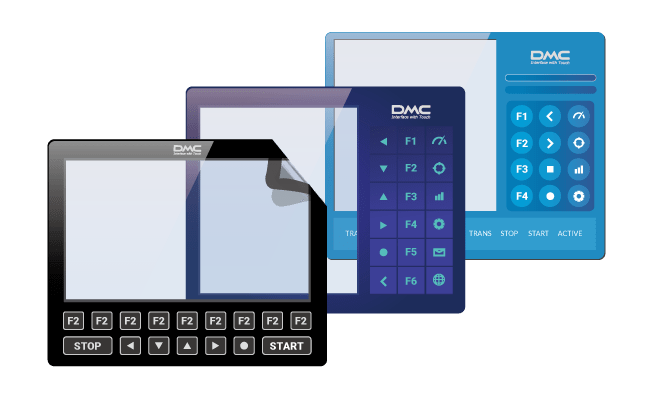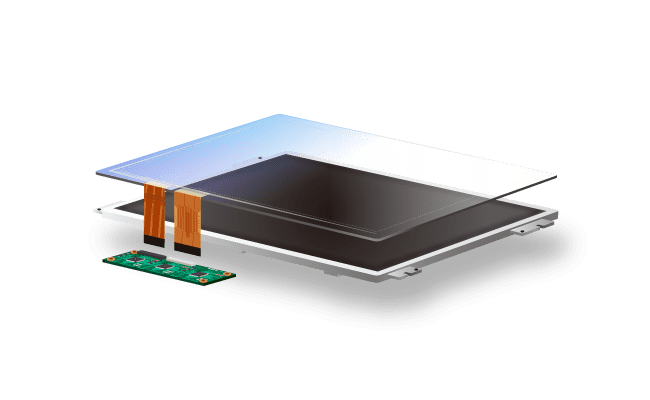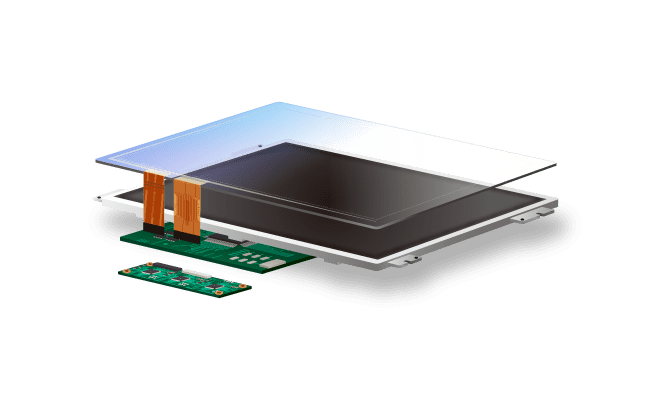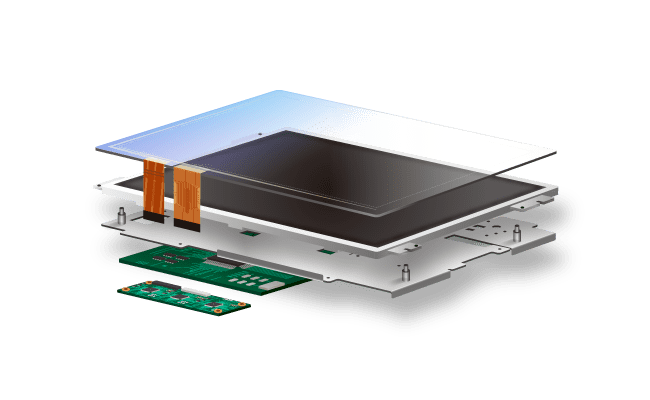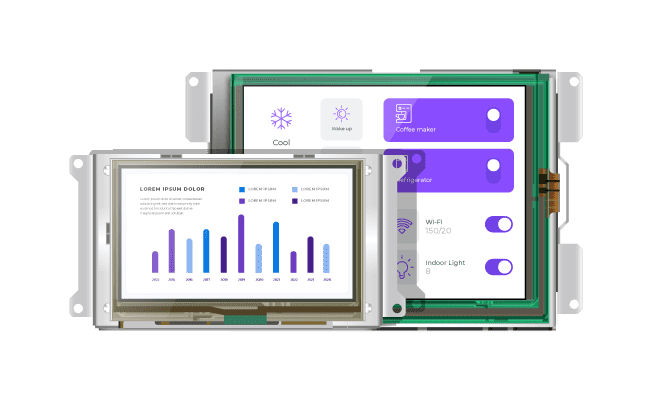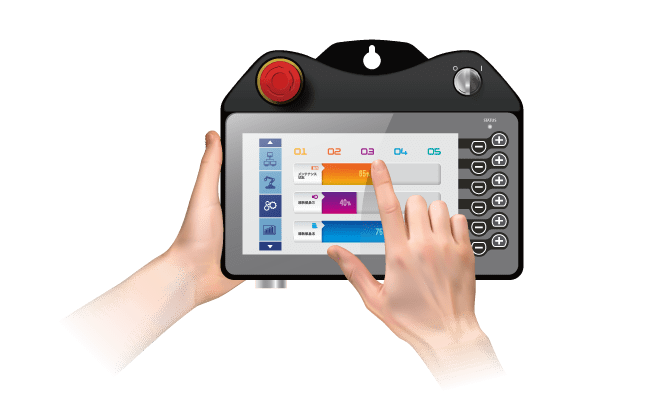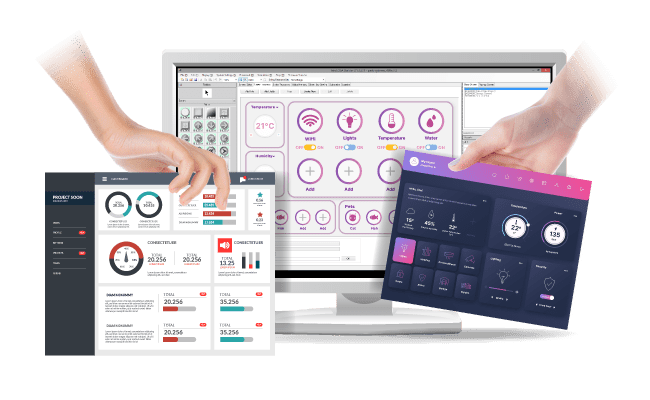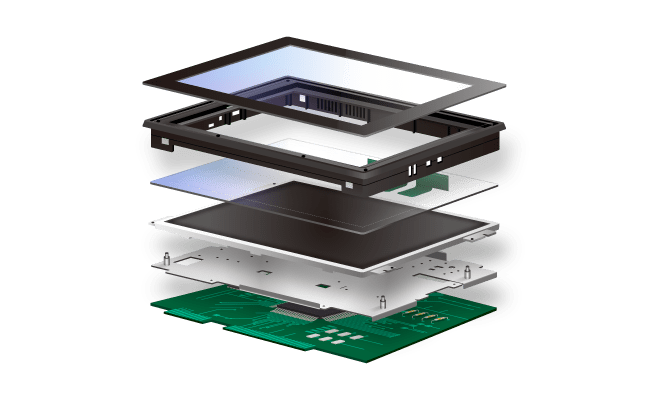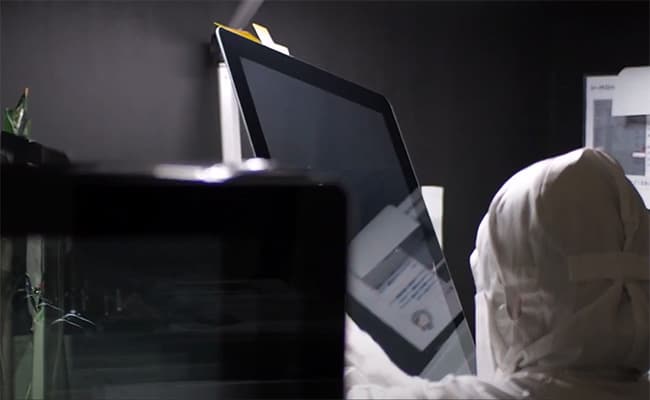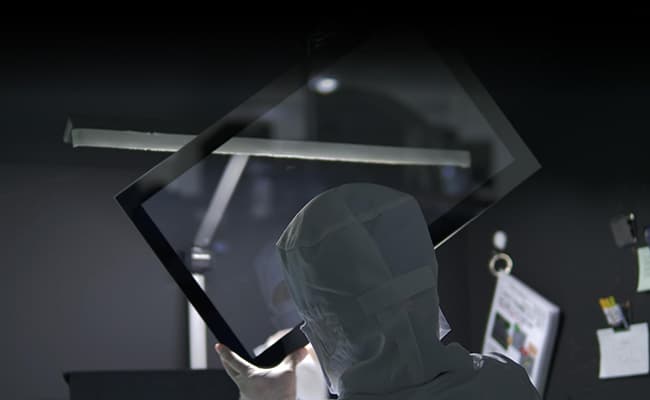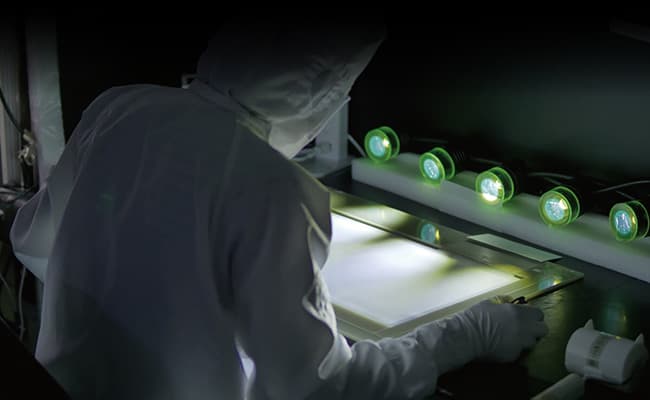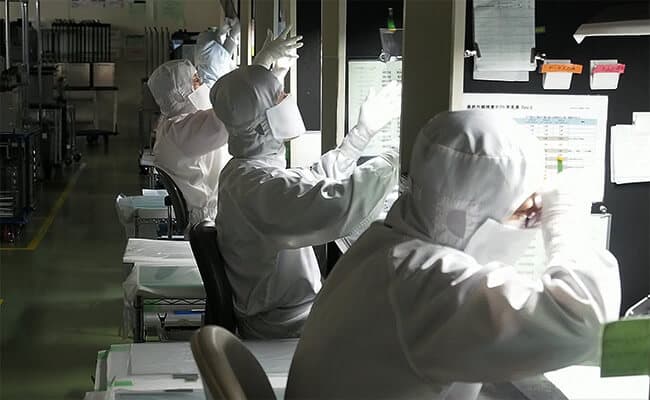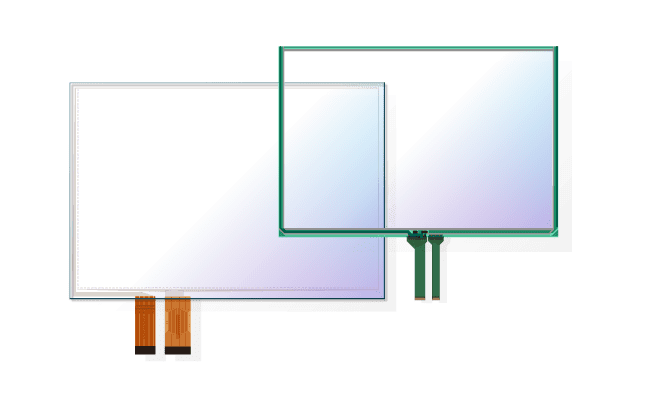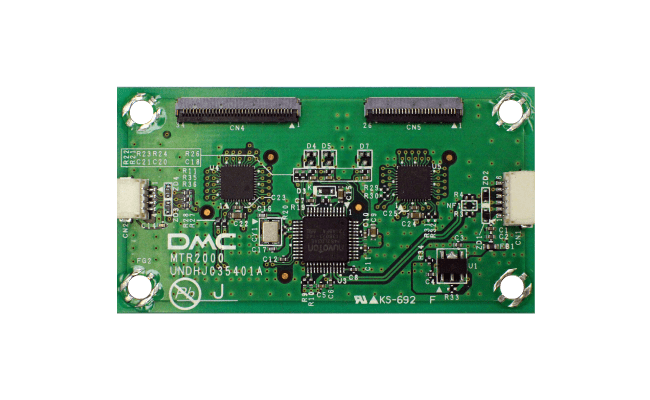Features of Capacitive Touchscreen
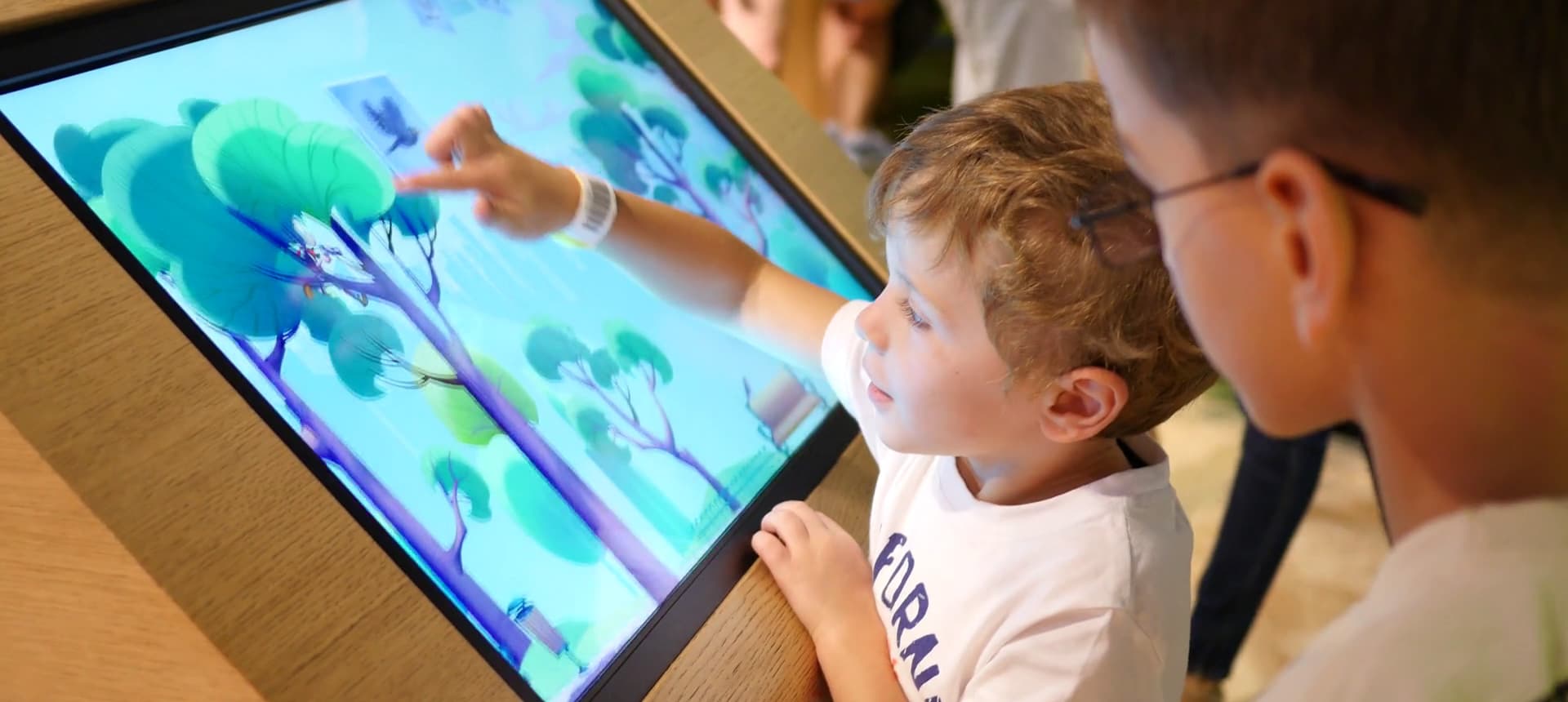
-
The most widespread touchscreen method used in smartphones
Touchscreen with multi-touch gesture operation
-
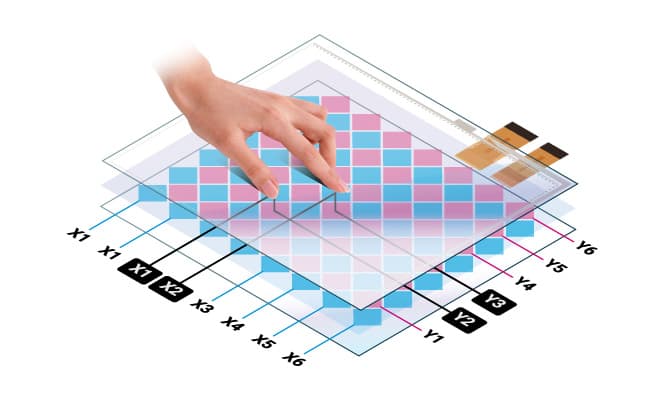
Capacitance is the amount of electric charge stored in a conductive material such as a capacitor. When contact occurs, positive and negative charges are attracted to each other, and the larger the contact area or the smaller the distance, the larger the capacitance. There are two types of detection methods, Surface Capacitive and Projected Capacitive, each of which has a different structure.
Projected Capacitive: PCAP
The projected capacitance method enables the detection of two or more inputs at the same time, and has features such as high durability and robustness. Multi-touch gestures such as flicking, zooming in/out, and rotating, as well as a flat design with no display surface steps are possible. Glove input is also possible through high sensitivity by controller adjustment. It has high performance in all aspects such as scratch resistance, weather resistance, and design.
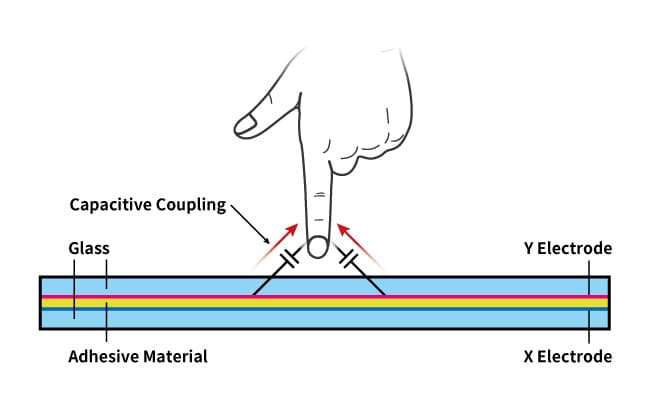
Operating Principle
Electrodes are formed in a matrix, and adjacent electrodes are capacitively coupled to each other. When a conductive material such as a finger approaches the electrodes, capacitive coupling is generated between the finger and the electrodes, and the change in the capacitive coupling value between the electrodes is detected as the touch position.
Self-capacitance method and mutual capacitance method
Own capacity way
-
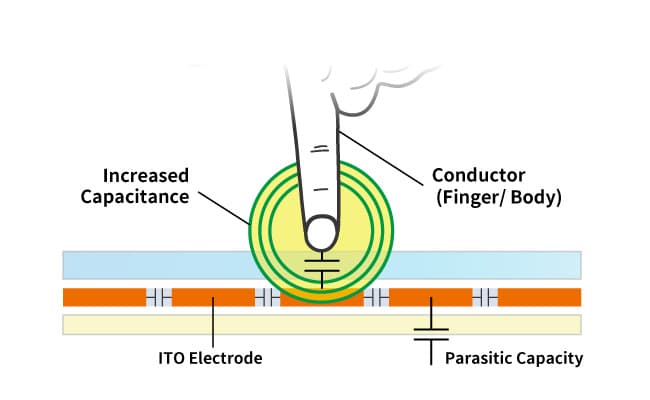
-
It detects the increase in capacitance caused by a human body (GND) such as a finger touching the electric field formed between the finger and the ITO electrode, and judges the touch by identifying the location. While it is highly sensitive and can be read even from the top of a thick cover, it has a weakness that it recognizes areas that are not touched during multi-touch (ghosting phenomenon) because it judges the touch position for each row/column of XY electrodes.
Mutual capacity method
-
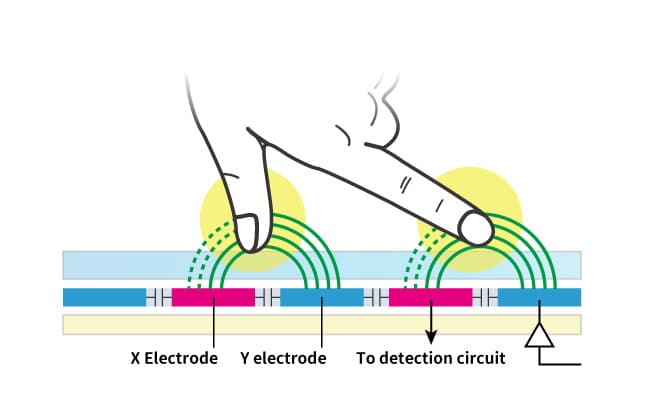
-
The change in the state of the electromagnetic field between the two electrodes of X and Y electrodes is detected. The electrode of one side is driven, and the electrode of the other side is formed between the finger (human body) and the tachypan in the vicinity, and the capacity between the electrodes is reduced by shifting the part of the electromagnetic field between the finger and the pane. This reduction in electrostatic capacity is detected by the proximity of the finger and the page.


